I have an array which contains information of the size and location a series of shapes: where the array is zero, there are no shapes, where the array is not zero there is a shape. Different shapes are separated by zeros - so that if you were to plot every point in the array, you would see a map of the various shapes. I hope that makes sense, if not here is an example array containing 4 different shapes:
np.array([[0, 0, 0, 1, 0, 0, 0],
[0, 0, 0, 0, 0, 0, 0],
[1, 1, 0, 0, 1, 0, 0],
[1, 1, 0, 0, 0, 1, 1],
[0, 0, 0, 0, 0, 1, 1],
[3, 5, 2, 0, 0, 0, 0]])
I need to count and identify these shapes but I only want to include the ones with an area above a certain threshold. I would like the area threshold to be 1/15 of the area of the largest shape in the field. (In the above example, the largest area would be 5.
The question is: How can I find (using python) the area of the maximum shape in the field without individually identifying each shape?
Edit
To clarify what I mean by the 'shapes', the following code plots an image of the array, which shows 4 distinct objects:
import numpy as np
import matplotlib.pyplot as plt
a = np.array([[0, 0, 0, 1, 0, 0, 0],
[0, 0, 0, 0, 0, 0, 0],
[1, 1, 0, 0, 1, 0, 0],
[1, 1, 0, 0, 0, 1, 1],
[0, 0, 0, 0, 0, 1, 1],
[1, 1, 1, 0, 0, 0, 0]])
ind = np.nonzero(arr)
x = ind[0]
y = ind[1]
plt.imshow(arr)
plt.show()

